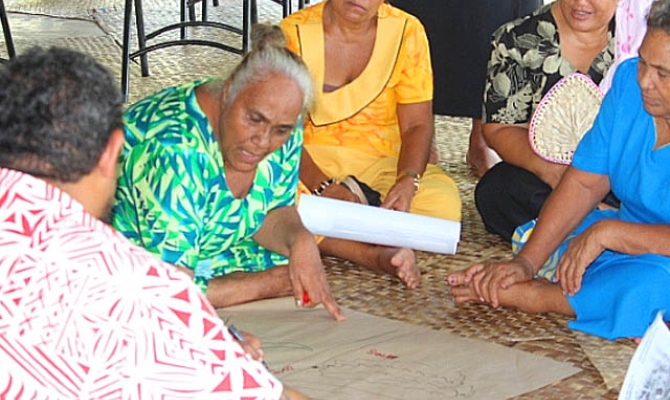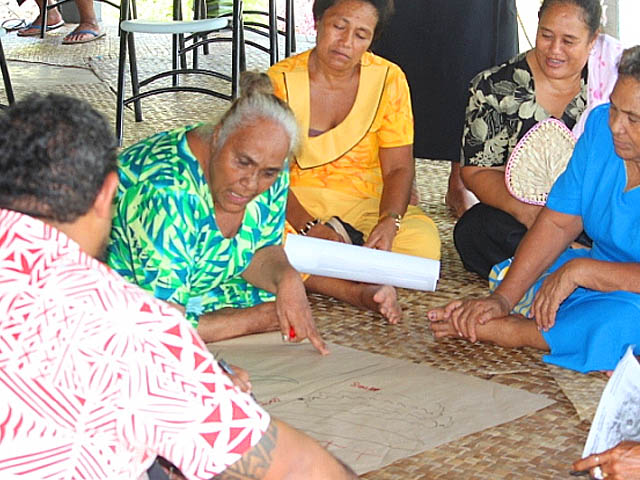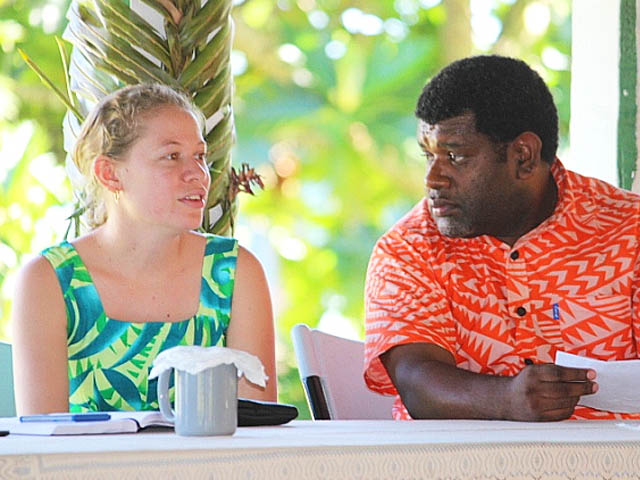
Climate Change Resilience
Of eighty-two households only three remain on the old village site by the sea, a low lying area which is prone to tropical cyclones, storm surges and flooding during severe weather. Seventy-nine households have chosen to relocate to the upland areas for safety.
A joint team spent four days in Lefagaoalii last month to discuss ways on how to improve the response of the village to climate and disaster events, with strong emphasis on improving community understanding of weather and climate information as the key early warning early action. This is part of the Finland-Pacific Project funded by the Government of Finland known as FINPAC.
The joint team consisted of members from the Samoa Ministry of Natural Resources and Environment (MNRE) represented by the Disaster Management Office (DMO), the Meteorological Division, and Samoa Red Cross with the assistance of regional partners - the International Federation of Red Cross and Red Crescent Societies (IFRC), as well as SPREP.

The workshop was designed and integrated with the Community Disaster and Climate Disaster Risk Management Programme that MNRE coordinates through DMO.
"Our village is very happy to have been chosen for this project, it is important that our people understand the warnings and prepare accordingly," said the Village mayor, Pagaialii Pagaialii.

The consultation workshops saw strong attendance from a wide range of village members including Matai (Chiefs), women and youth. For the Samoa Met Service staff this was a great opportunity to strengthen their partnership with Samoa Red Cross and other Non Government Organisations who are working with communities.
A small pilot project to support early warning actions for Lefagaoalii will be coordinated by Samoa Red Cross and funded by the Government of Finland through the Finland-Pacific Project implemented by SPREP.
A joint team spent four days in Lefagaoalii last month to discuss ways on how to improve the response of the village to climate and disaster events, with strong emphasis on improving community understanding of weather and climate information as the key early warning early action. This is part of the Finland-Pacific Project funded by the Government of Finland known as FINPAC.
The joint team consisted of members from the Samoa Ministry of Natural Resources and Environment (MNRE) represented by the Disaster Management Office (DMO), the Meteorological Division, and Samoa Red Cross with the assistance of regional partners - the International Federation of Red Cross and Red Crescent Societies (IFRC), as well as SPREP.

The workshop was designed and integrated with the Community Disaster and Climate Disaster Risk Management Programme that MNRE coordinates through DMO.
"Our village is very happy to have been chosen for this project, it is important that our people understand the warnings and prepare accordingly," said the Village mayor, Pagaialii Pagaialii.

The consultation workshops saw strong attendance from a wide range of village members including Matai (Chiefs), women and youth. For the Samoa Met Service staff this was a great opportunity to strengthen their partnership with Samoa Red Cross and other Non Government Organisations who are working with communities.
A small pilot project to support early warning actions for Lefagaoalii will be coordinated by Samoa Red Cross and funded by the Government of Finland through the Finland-Pacific Project implemented by SPREP.